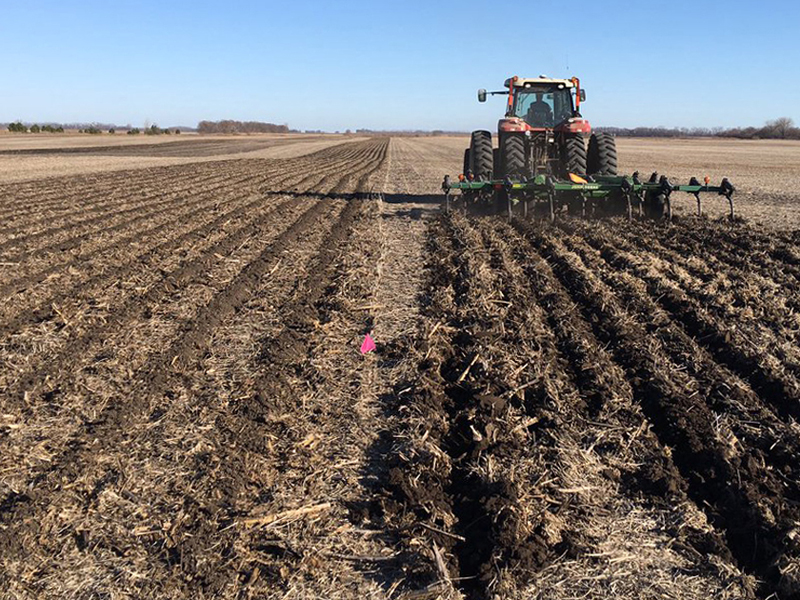Overturning the truth on conservation tillage
July 29, 2019 - Rachel Leege
Just as we blend, cut, and fold ingredients together to follow a recipe, farmers use equipment to stir together soil and crop residue (stalks and roots of previous crops) before planting. This mechanical action is called tillage.
 Similar to our kitchen cupboard with a blender, mixer, and beater, farmers have access to a variety of tillage equipment. Farmers choose the “right” piece of tillage based on many factors, including location, soil type, crop, and landscape.
Similar to our kitchen cupboard with a blender, mixer, and beater, farmers have access to a variety of tillage equipment. Farmers choose the “right” piece of tillage based on many factors, including location, soil type, crop, and landscape.
Tillage has been around for thousands of years. “It is difficult for nearly anyone to grow a crop, or even a garden, without unconsciously going through the motions of tillage,” says Aaron Daigh. “I see it as a near equivalent to muscle memory or a natural reflex.” Daigh is a researcher and professor at North Dakota State University.
Modern conservation tillage practices protect the soil and environment. For example, they can reduce erosion from water or wind and keep nutrients in the right place.
Farmers are showing more and more interest in adapting conservation practices on their operations. But, adopting a new tillage system can be intimidating due to many real and perceived concerns. For example, some farmers presume conservation tillage will lead to lower yields and an increased risk for seedling diseases.
Scientists are making it easier for farmers in the Midwest to make the right tillage decisions when considering modern conservation practices. Daigh and his team compared the effects of three common conservation tillage systems to the traditional method of a chisel plow with field cultivation:
- Shallow vertical till
- Strip till using shanks
- Strip till using coulters
After four years, researchers observed that yields rarely, if ever, differed among the four tillage systems at any of the farms. Still, change is never easy. The study by Daigh and his team suggests that adapting conservation tillage practices will not cause yield losses. In fact, conservation tillage practices will lower on-farm costs while preserving long-term productivity.
“These results may ease farmers’ concerns about switching to conservation tillage,” says Daigh. “Perhaps more farmers will consider if conservation tillage practices are a good fit for their operations.”
“I encourage farmers who are interested, but hesitant, to try conservation tillage practices on one field to get more accustomed to the new system,” he says. “Then, try it out on more fields until you get your farm designed to meet your needs and goals.”
As always, the whole picture should be evaluated before making on-farm decisions. “It’s not just about yield,” says Daigh. “Economics and crop-residue for erosion protection should also guide farmer decisions.”
The research team continues to investigate. “We are currently looking at the incorporation of cover crops into reduced tillage practices,” says Daigh.
This study focused on farms with one type of tillage used per field. However, newer equipment allows for variable tillage methods at once. For example, it may be capable of vertical tillage and strip tillage at the same time. In the future, Daigh and his colleagues would like to see researchers evaluate the effects of these new technologies.
Read more about this work in Agricultural & Environmental Letters. This research was partially funded by the North Dakota Soybean and Corn Councils, Minnesota Soybean and Corn Research and Promotion Councils, North Dakota Agricultural Experiment Station, University of Minnesota Extension, North Dakota Extension, USDA-NRCS Conservation Innovation Grant 69-3A75-17-282, and USDA-NIFA Hatch project 1005366.
